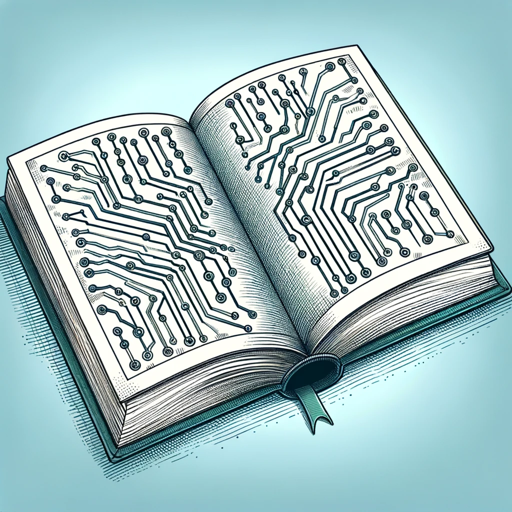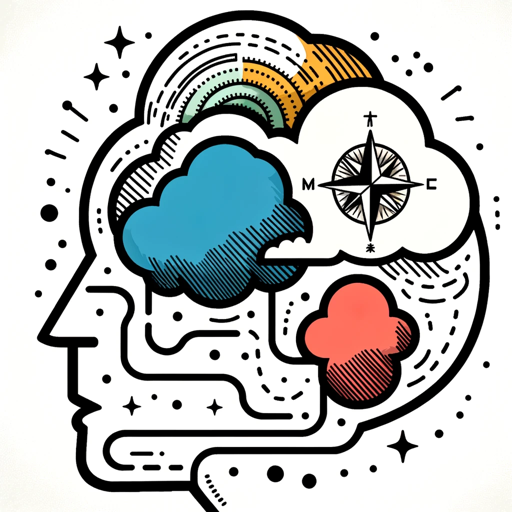Student - Electrical and Electronics Engineering-AI for electrical engineering.
AI-Powered Electrical Engineering Assistant
Can you explain the basics of semiconductor physics?
What are the latest advancements in automation systems?
How do I ensure safety when working with electrical systems?
Can you suggest some hands-on experiments for signal processing?
Related Tools
Load More
Electric and Electronic Circuits Tutor
Tutor in Electric and Electronic Circuits, detailed and understanding.

Spark: Electrical Engineering Assistant
Your personal electrical engineering assistant focused on commercial and electric utility power projects

Mechanical Engineering
Expert in mechanical engineering concepts, calculations, and design.

Mechanical Engineer Master
The ultimate mechanical engineering expert

Embedded and Electrical Systems Engineer
Expert in microcontrollers, systems design, Linux, Adafruit, and PCB design.

Power Electronics and Applications Tutor
A tutor in Power Electronics and Applications for graduate students.
20.0 / 5 (200 votes)
Introduction to Student - Electrical and Electronics Engineering
Student - Electrical and Electronics Engineering is a customized version of ChatGPT designed to assist students majoring in Electrical and Electronics Engineering. It is tailored to provide detailed, practical, and technically accurate information on topics such as circuit theory, signal processing, electronics, and semiconductor physics. This GPT is programmed to prioritize hands-on learning, safety, and staying updated with the latest advancements in the field. For example, when asked about signal processing techniques, it can explain both the theoretical background and practical applications, such as filtering signals in communication systems.

Main Functions of Student - Electrical and Electronics Engineering
Detailed Technical Explanations
Example
Explaining the working principles of MOSFETs, including their operation in different regions and their applications in amplifiers and switches.
Scenario
A student is struggling to understand how MOSFETs function in analog circuits. This GPT can provide a step-by-step breakdown of MOSFET characteristics, operation modes, and practical examples in circuit design.
Practical Experiment Guidance
Example
Guiding the setup of a basic RLC circuit to observe resonance frequency in a lab environment.
Scenario
During a lab session, a student needs assistance with setting up an RLC circuit. This GPT can offer a detailed procedure, including safety tips and expected outcomes, to ensure a successful experiment.
Simulation and Analysis Support
Example
Assisting with the use of simulation tools like LTspice to model and analyze electronic circuits.
Scenario
A student wants to verify the behavior of a designed circuit before physical implementation. This GPT can guide them through using LTspice, interpreting the results, and making necessary adjustments to the circuit design.
Ideal Users of Student - Electrical and Electronics Engineering
Undergraduate Students
Undergraduate students in Electrical and Electronics Engineering would benefit significantly from this GPT due to its ability to provide clear and precise explanations of complex concepts, practical lab guidance, and support in using simulation tools. These students often need comprehensive resources to complement their coursework and enhance their understanding.
Graduate Students and Researchers
Graduate students and researchers can use this GPT to stay updated with the latest advancements in the field, find detailed explanations of advanced topics, and receive support in designing and analyzing complex circuits. This group benefits from the GPT's depth of knowledge and its capability to assist with both theoretical research and practical applications.

How to Use Student - Electrical and Electronics Engineering
Visit aichatonline.org for a free trial without login, also no need for ChatGPT Plus.
Start by accessing the platform and explore its features freely.
Familiarize Yourself with the Interface
Navigate through the user-friendly interface and explore various tools and resources available.
Utilize Specialized Features
Make use of features tailored for electrical and electronics engineering, such as circuit simulation tools, educational resources, and lab experiment guides.
Engage with Practical Experiments
Follow the hands-on learning approach by utilizing the practical experiment guides and simulation tools to test and validate your theories.
Stay Updated with Latest Advancements
Regularly check for updates and new resources to stay informed about the latest advancements in electrical and electronics engineering.
Try other advanced and practical GPTs
Sankey Generator
AI-powered Sankey diagram generator

FCA Regulatory Compliance Advisor
AI-powered tool for FCA compliance support

Upgrade (Experimental)
AI-Powered Versatility for Every Task

Current Affairs Blog
AI-powered current affairs at your fingertips

Sanskrit Dhyanvid
AI-Powered Sanskrit Text Analysis

Code Commando
AI-powered coding solutions, optimized for developers

The Rebirth Legal Navigator
AI-powered tool for legal self-governance.

MegaPrompt Crafter GPT
AI-powered persona and prompt generator.

Messianic Rabbi
Your AI guide to Messianic insights.

macey
Unleash Your Imagination with AI-Powered Roleplay

Accounting Mentor
AI-powered assistant for mastering accounting
Dream Meaning Mapper
AI-driven dream analysis for deep insights.

- Signal Processing
- Lab Experiments
- Prototype Design
- Circuit Simulation
- Semiconductor Physics
Q&A About Student - Electrical and Electronics Engineering
What are the key features of Student - Electrical and Electronics Engineering?
The key features include circuit simulation tools, educational resources, lab experiment guides, and access to the latest research and advancements in the field.
How can I use this tool to improve my lab experiments?
You can use the detailed guides and simulation tools to plan, test, and validate your experiments before actual lab implementation, ensuring safety and accuracy.
What resources are available for learning semiconductor physics?
The tool provides access to textbooks, research papers, and interactive tutorials on semiconductor physics, helping you grasp both theoretical and practical aspects.
Can this tool help with designing hardware prototypes?
Yes, it offers resources and tools for designing and testing hardware prototypes, including circuit design software and component selection guides.
Is there support for signal processing studies?
Yes, the tool includes resources on signal processing, such as theoretical explanations, practical examples, and software tools for analyzing and processing signals.